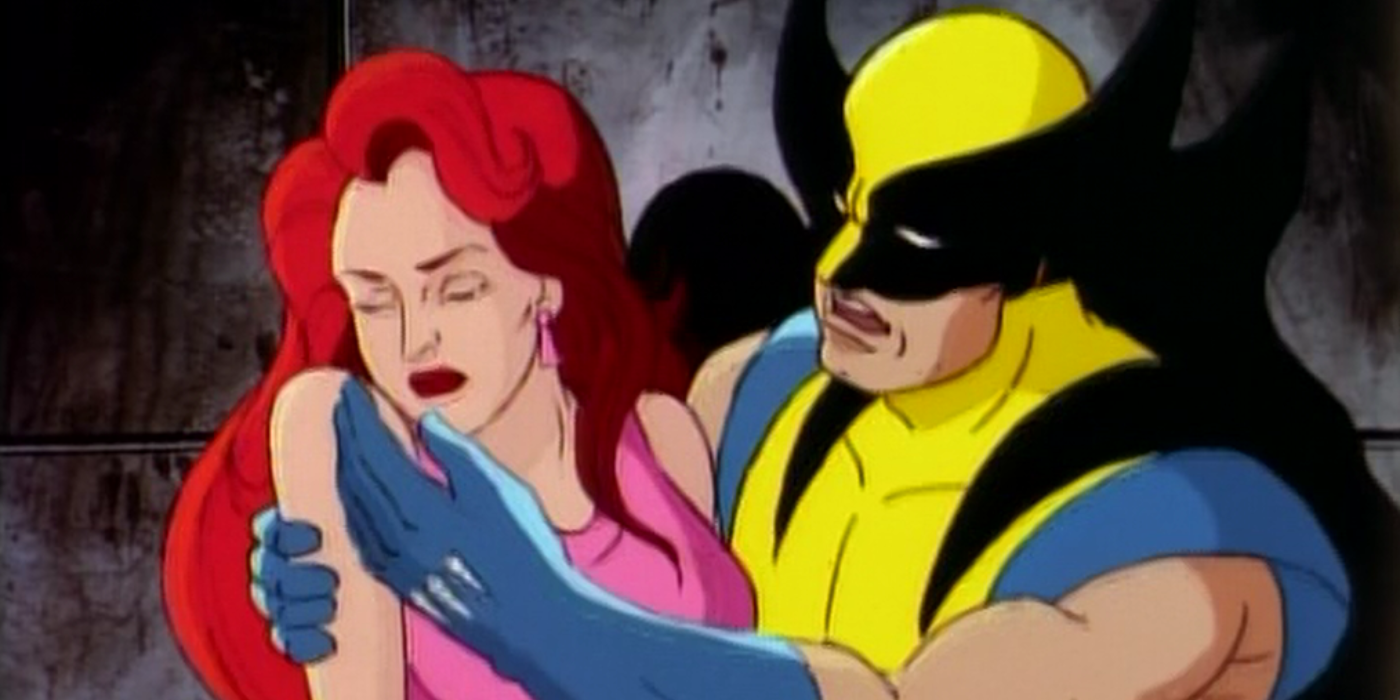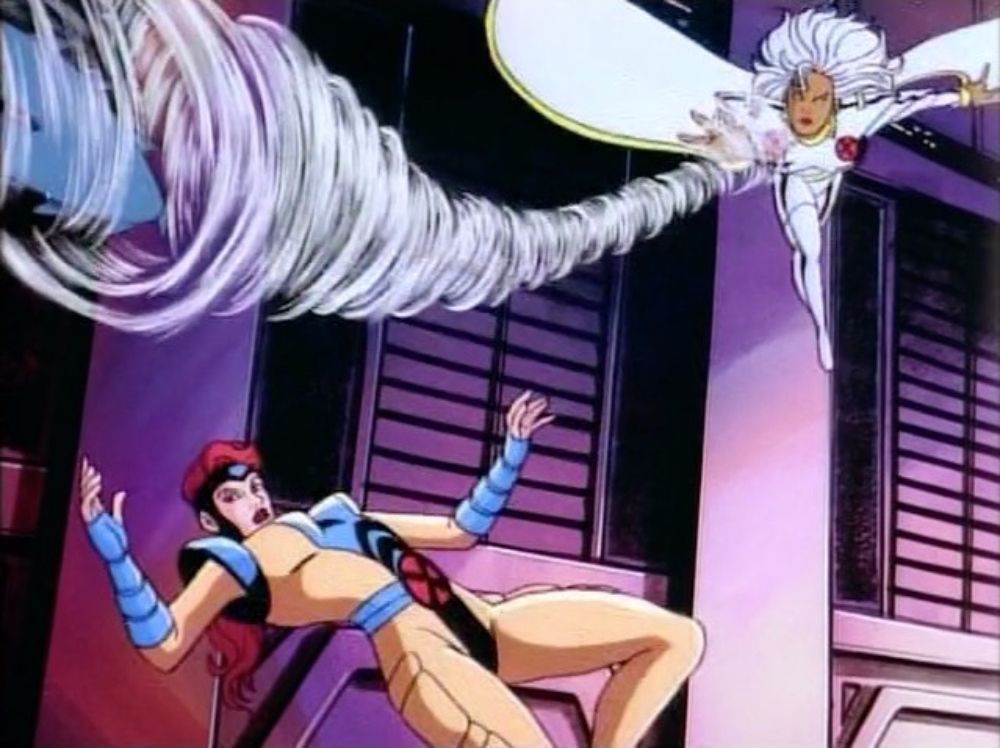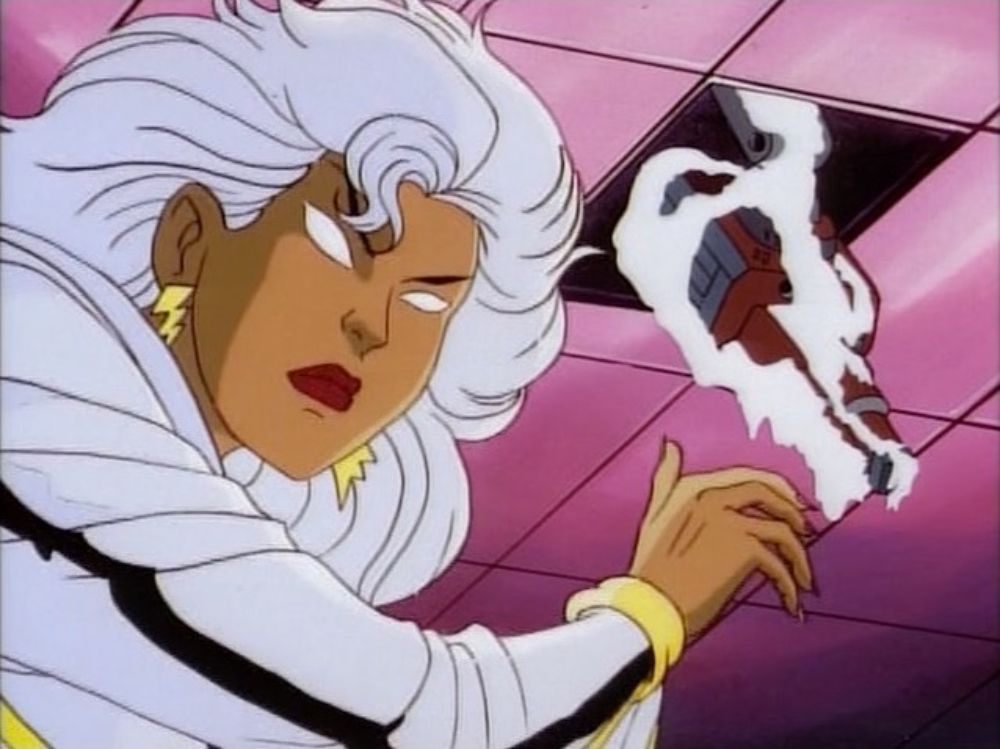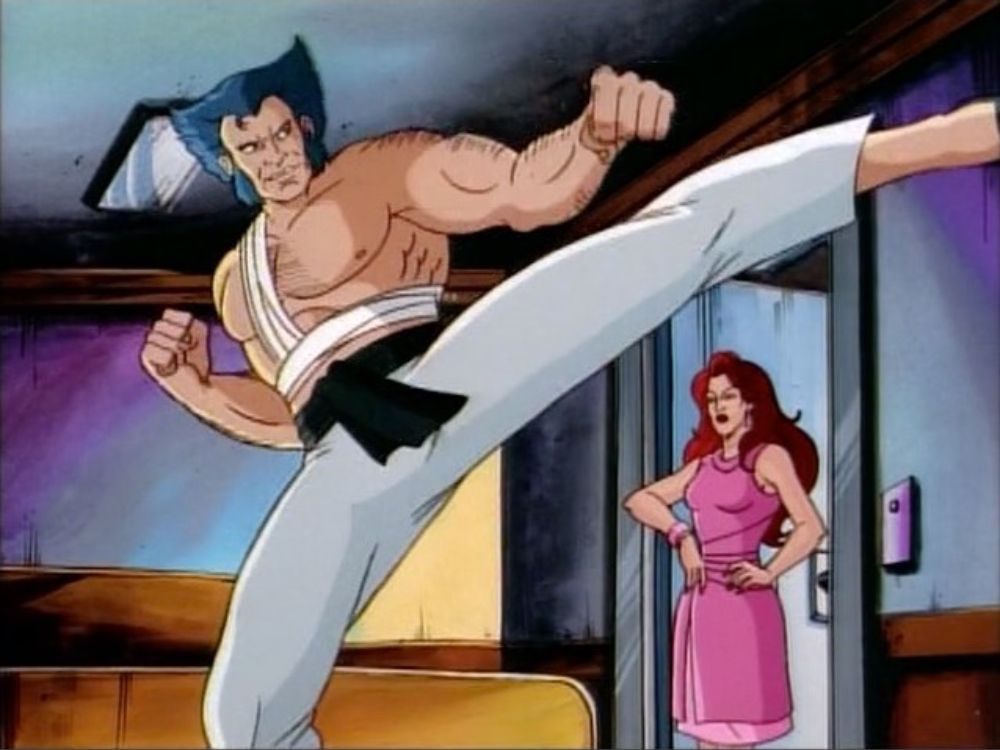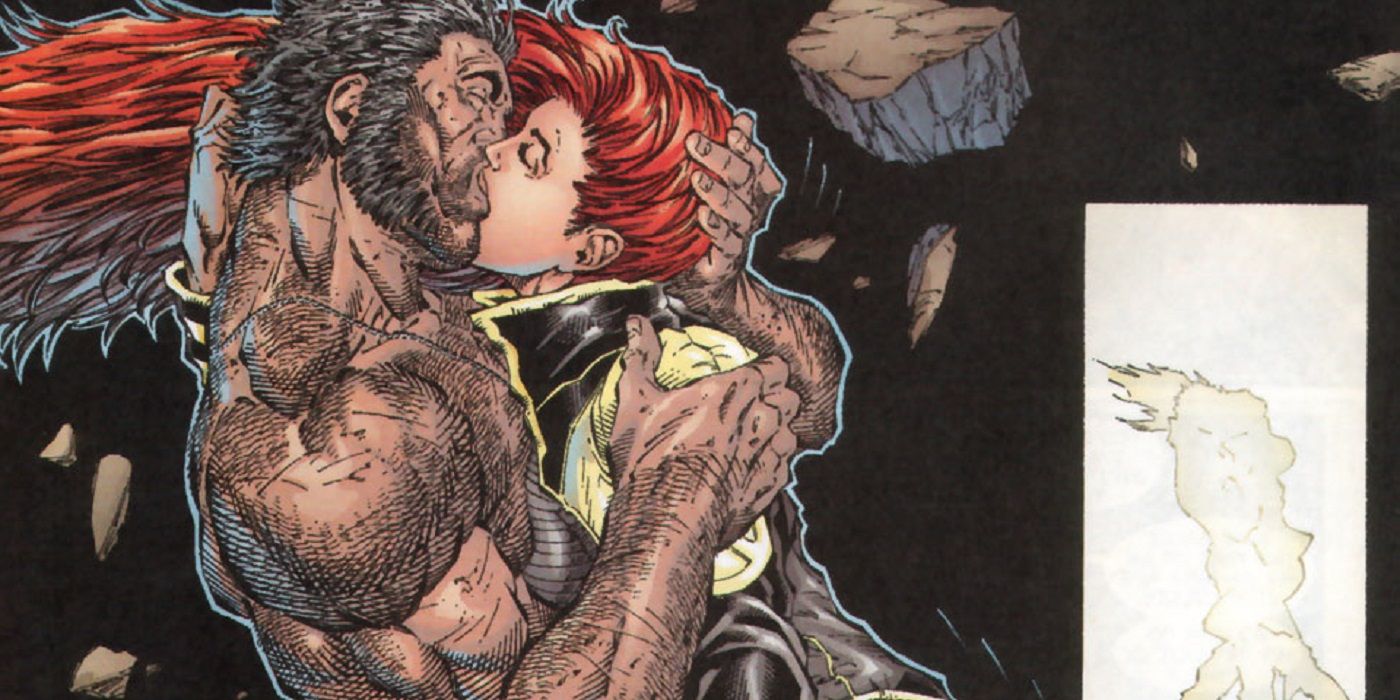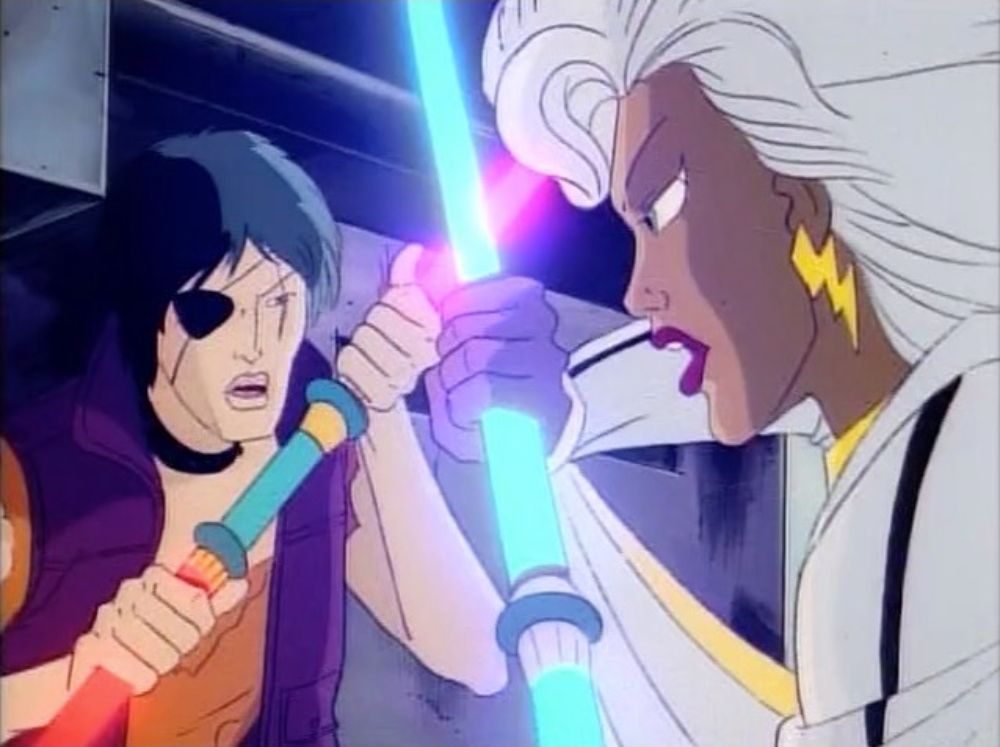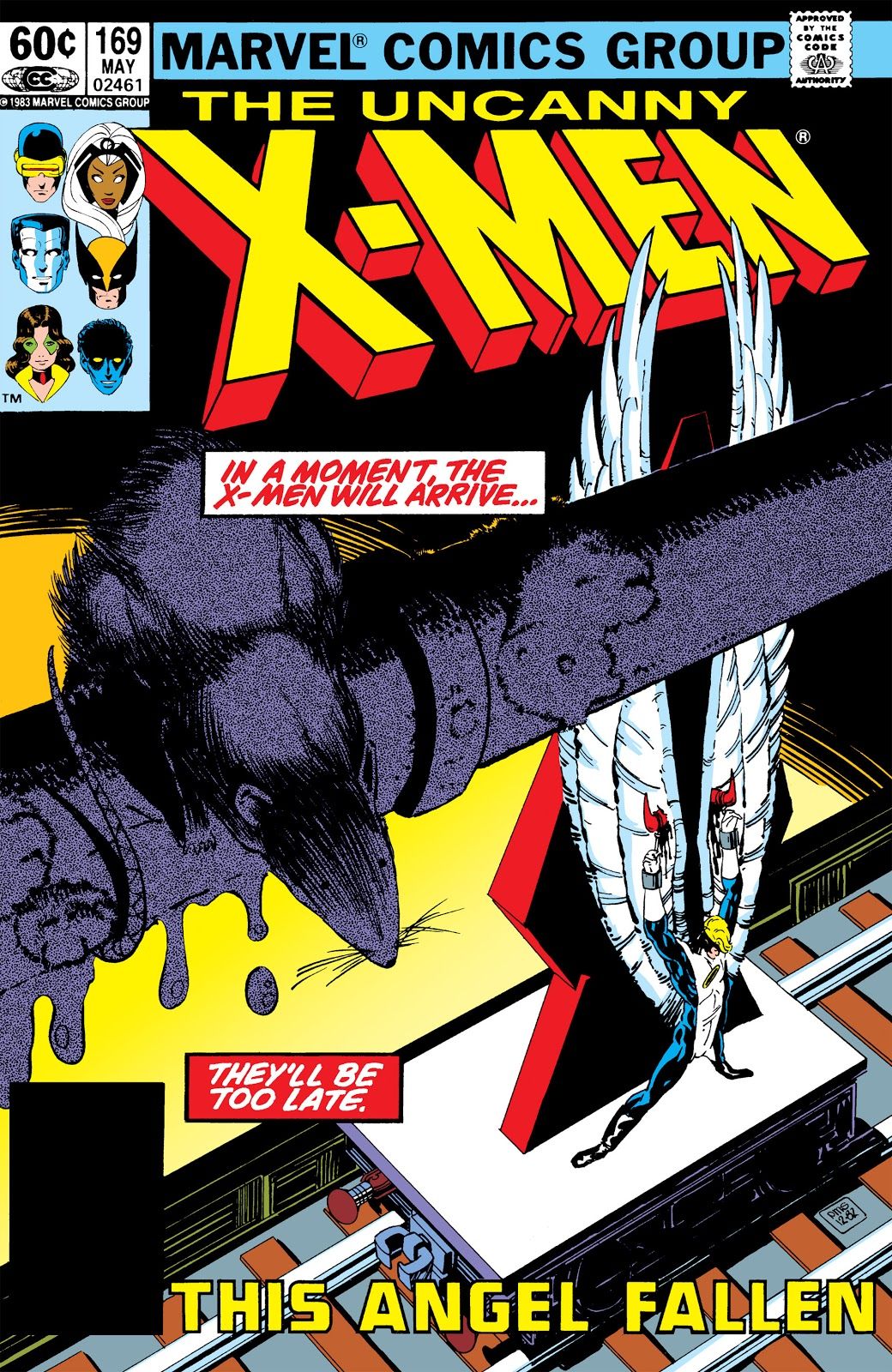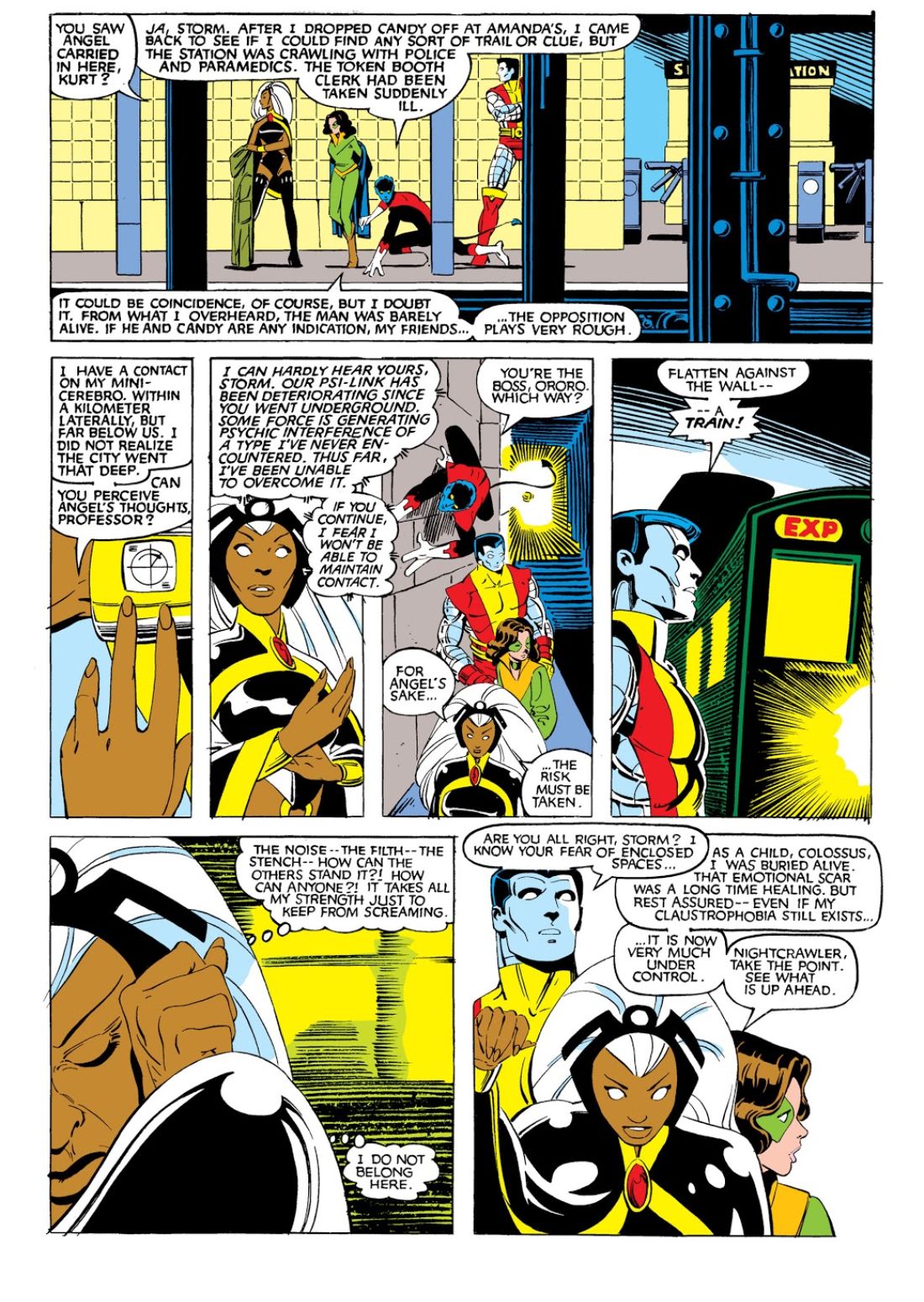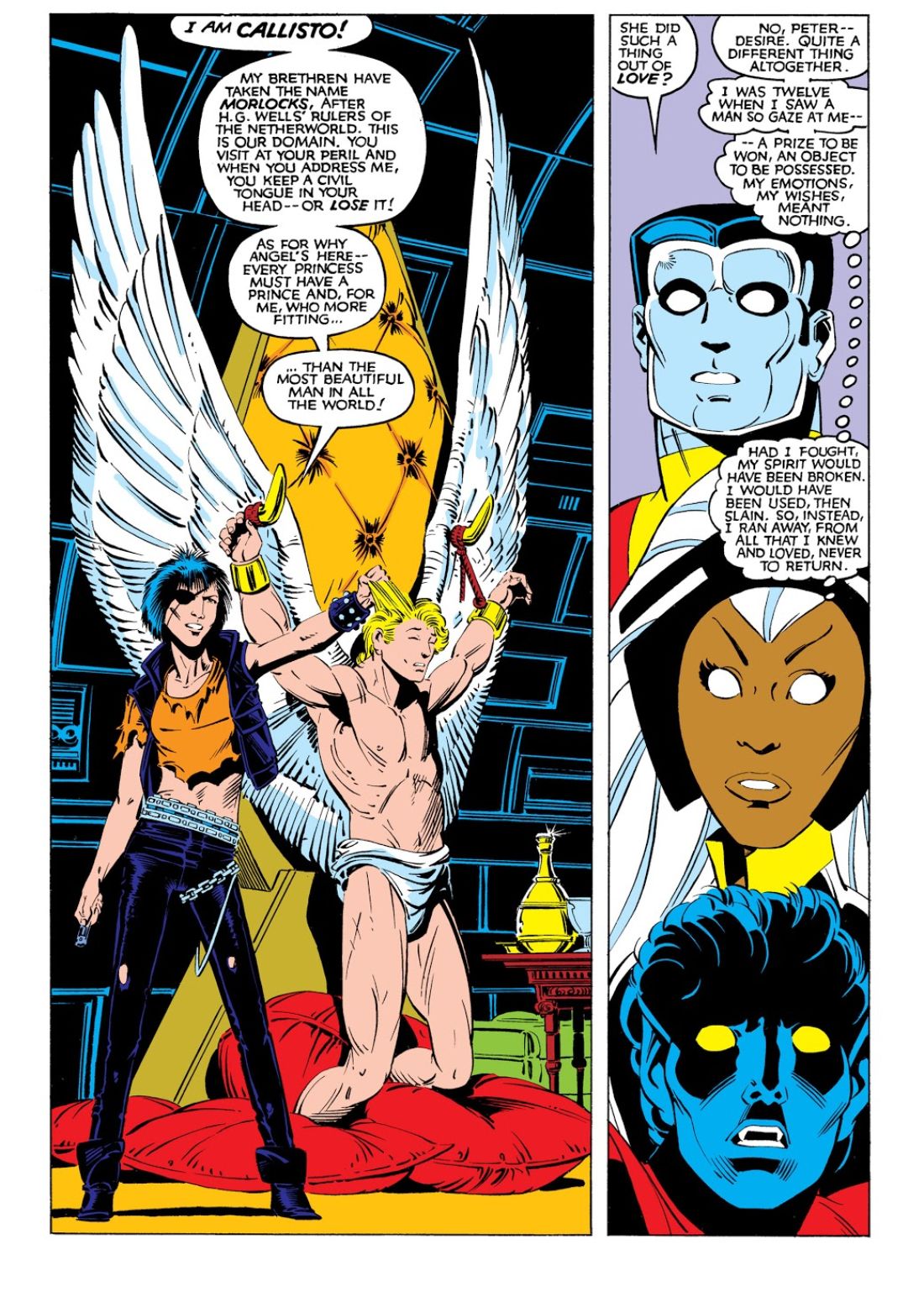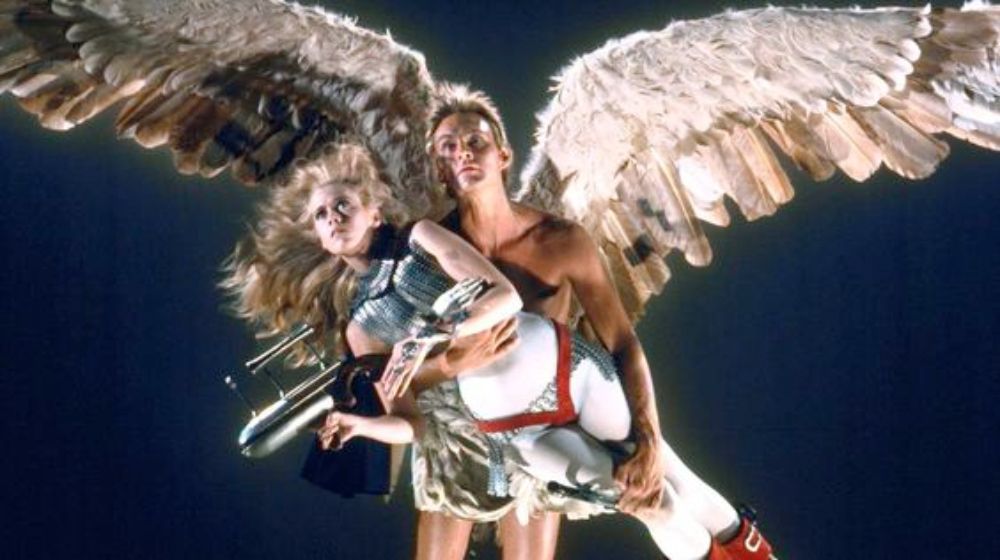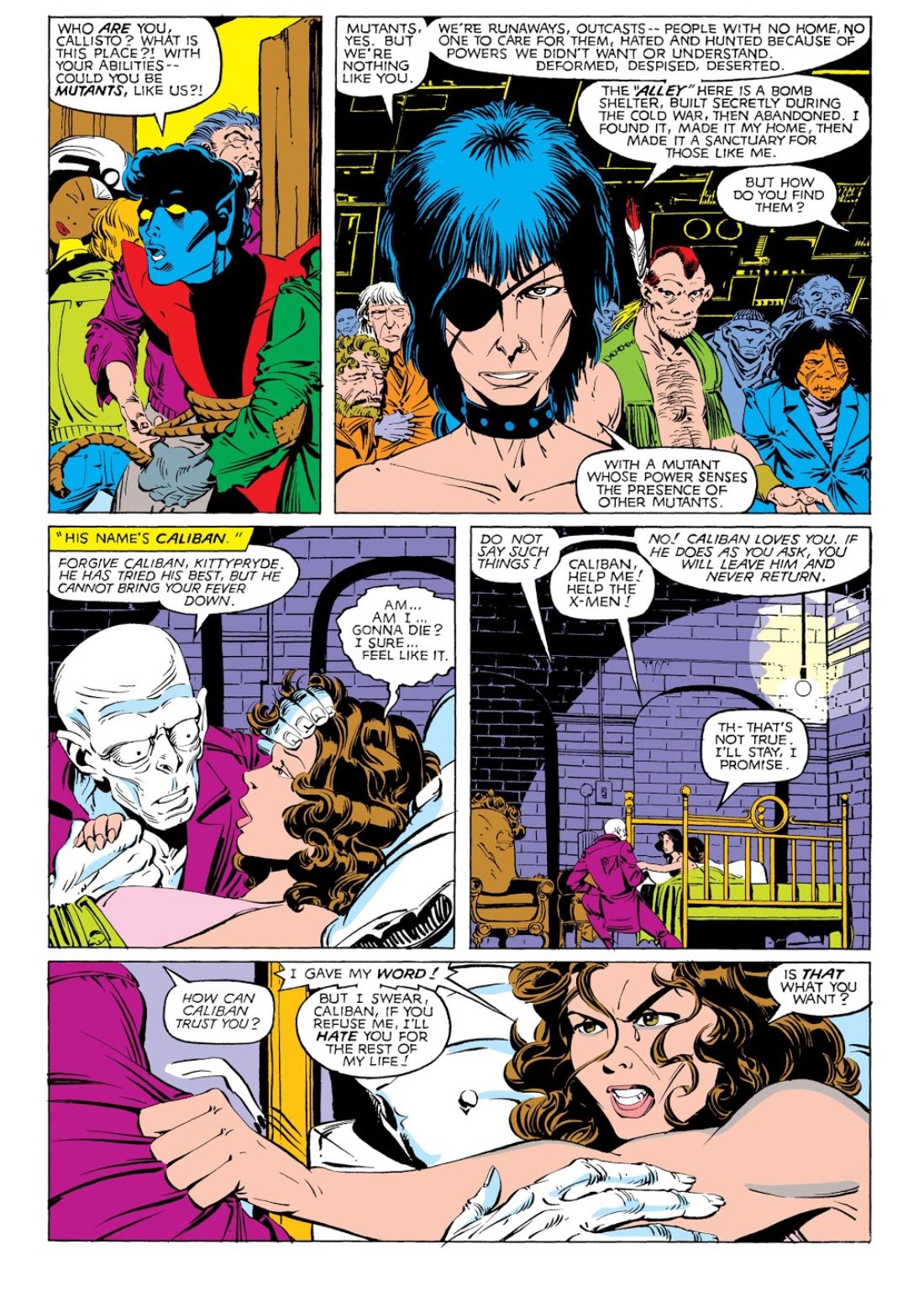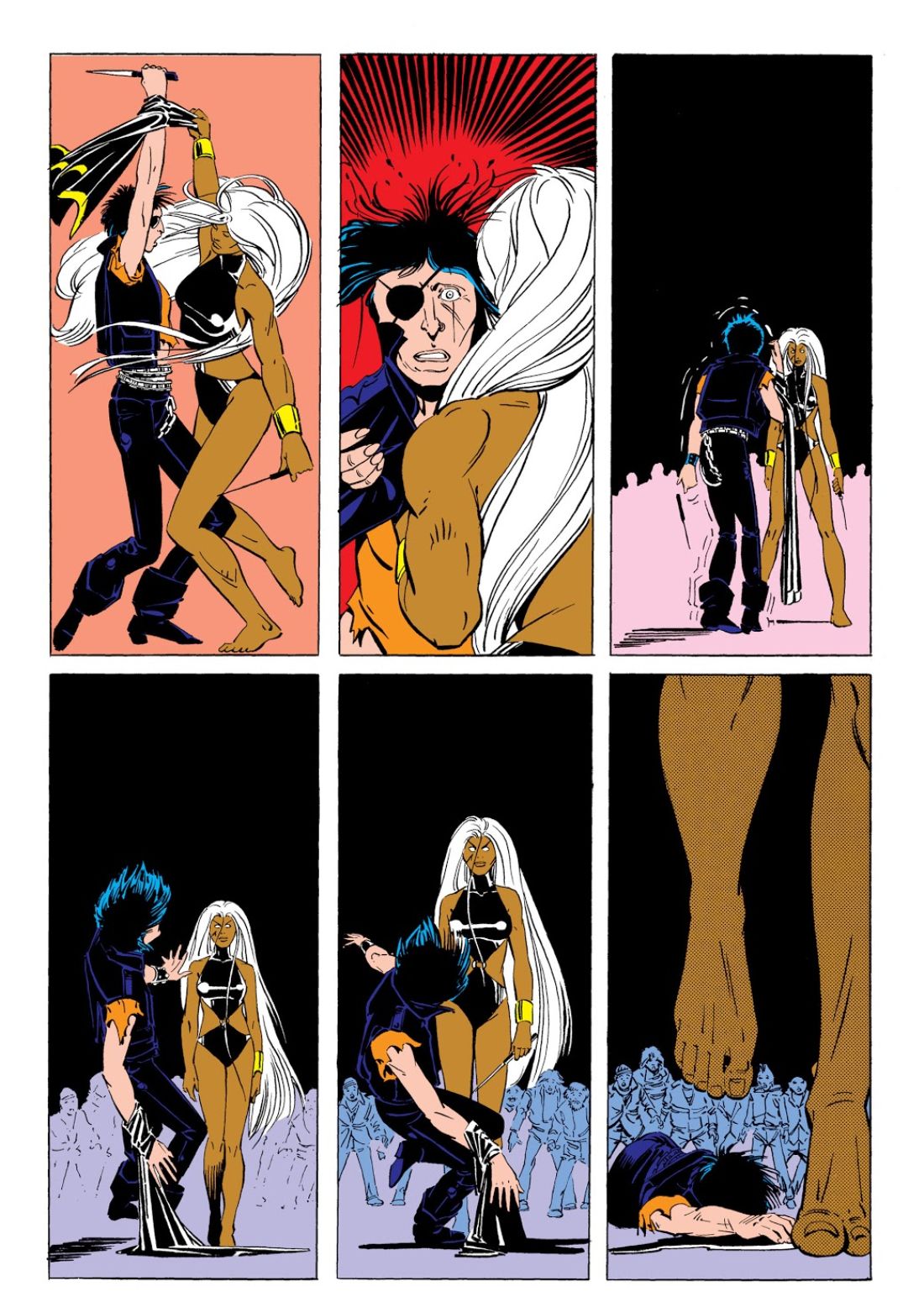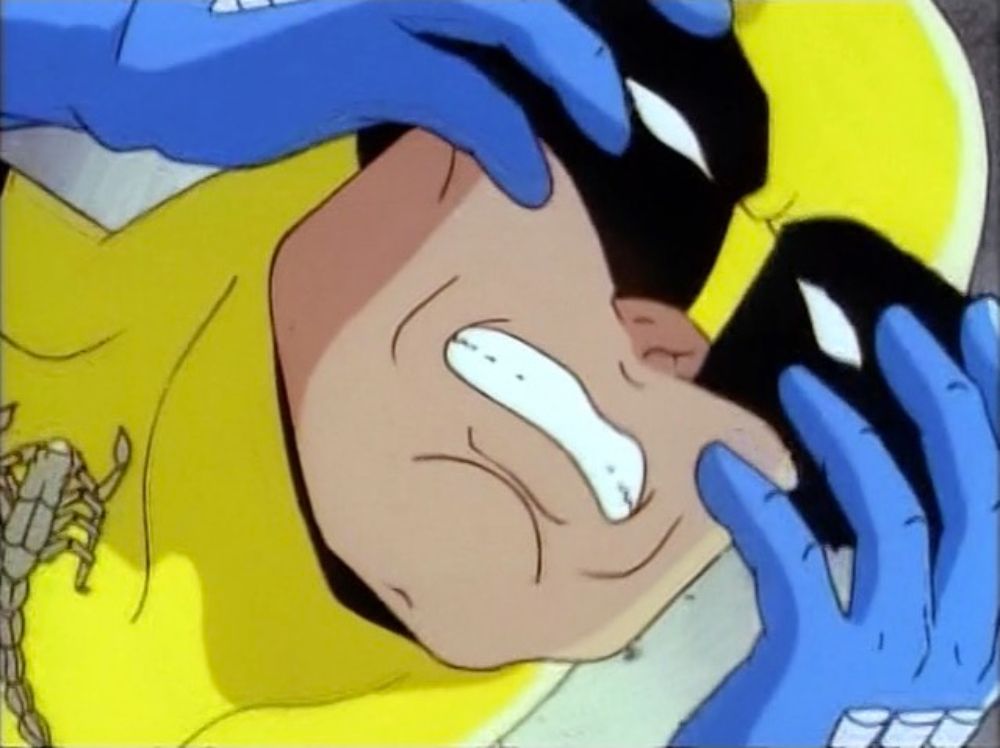Welcome to Adventure(s) Time's sixty-fourth installment, a look at animated heroes of the past. This week, we're once again examining the comics that inspired the more memorable episodes of these series. And when it comes to comics-to-cartoon adaptations, it's hard not to think of the 1990s X-Men: The Animated Series.
So, let's go back to January 30, 1993 and the debut of the episode "Captive Hearts." Written by Robert N. Skir and Marty Isenberg, the inspiration for the episode comes from the very first Morlocks story. Even if the Morlocks are a part of some regrettable areas of X-canon, their debut arc does lend itself to adaptation. It has a clear beginning and ending, an easy to follow conflict, and room to play around with the cast.
The episode begins with a Danger Room training session, featuring Storm, Rogue, Gambit, Jubilee, and Jean Grey. Danger Room scenes run the risk of existing solely for cheap action sequences. The true point of this opening, though, is to remind viewers of Storm's claustrophobia, and dramatize her reluctance to become deputy leader of the X-Men.
These few minutes actually sum up an aspect of X-Men that was revolutionary at the time. Not only are there internal politics, relating to which superhero should lead the others into battle, but a character conflict dominates the scene. Due to a traumatic incident in her youth, severe claustrophobia plagues Storm.
Storm fears this condition will place her teammates in jeopardy. She's not here to be "strong, independent female." Storm's a believable person with a real obstacle she must overcome. And a pep talk isn't enough to shake the doubts; she has to work through them on her own.
That level of characterization was common in the comics, especially in the era of Chris Claremont as the dominant writer in the field. In TV animation, however, characters had never spoken like this before. (Yes, Batman was running concurrently, also presenting a more complex view of superheroes. The show rarely allowed the hero to have the doubts and regrets of the X-Men, though.)
Speaking of heroes with issues, there's Wolverine. Still recovering from a battle with Sabretooth, still hurting over his feelings for Jean Grey. Writers Skir & Isenberg believe their handling of the Jean/Wolverine "romance" here has had a massive influence on the canon. Bryan Singer took his cues for the X-Men from this series, and incorporated Wolverine's feelings for Jean into the films. Which surely inspired the comics to once again play up this alleged sizzling chemistry between the two.
There's some truth to this, most likely. But let's not forget Chris Claremont, all the way back with 1986's Classic X-Men #1, took Wolverine's flirtations with Jean from unrequited desire to actual feelings on Jean's part. Totally new, and a decision strongly opposed by a segment of fandom. (Claremont even revealed Jean left the team in this era because she couldn't handle her intense feelings for Wolverine. Now, that's a retcon!)
Anyway, during a date in the city, Morlocks ambush and kidnap Cyclops and Jean Grey. Their leader, Callisto, declares Cyclops will marry her and serve at her side. Now, in retrospect...this is just weird. If you're a kid unfamiliar with the Morlocks, you're probably willing to go along with it, to assume it's just how this odd society operates. Considering the way the concept is played out, however, it comes across as rather strange for Callisto to be lusting after a husband this way.
Jean delivers a telepathic distress call to Professor Xavier, who sends the X-Men to rescue them. Most of the subsequent scenes are action heavy, but the character work is steady. Storm's placed in the sewers, the last place someone struggling with claustrophobia wants to be. Wolverine's there to support her, in his own way, barking at the other X-Men. It's something she has to face alone, he declares. Meanwhile, Wolverine is also placed through emotional turmoil, rescuing the man standing in the way of the woman he desires. One scene even has him contemplating killing a sleeping Cyclops!
The X-Men fight the Morlocks to a standstill, leading Storm to challenge Callisto for the leadership of the Morlocks. Storm wins the duel, ordering the Morlocks to free the X-Men. She then declares Callisto will rule in her absence, as the Morlocks have no interest in interacting with the surface world. (And sparing the creators from addressing a question that even Claremont couldn't quite answer--how is Storm honestly going to rule these people?)
A Season One episode wouldn't be complete with some tease for the next episode. So, in the final moments, a distraught Wolverine abruptly runs away in the night.
NEXT PAGE: Callisto's Comic Book Love Interest Was a Very Different X-Man
Now, what's the inspiration for this episode? It comes from 1983's Uncanny X-Men #169 and #170, two issues from the much beloved creative team of Chris Claremont and Paul Smith. And, as made clear by issue #169's cover, the adaptation hinges on a significant change from the original. This time, it's Angel that's been selected as Callisto's love-slave.
And the team of X-Men dispatched to rescue him consists of Storm, Kitty Pryde (who's now rejecting her codename of "Sprite"), Colossus, and Nightcrawler. Storm's the only player to survive the adaptation! As for Wolverine, he's off starring in his first miniseries. As outrageous as this sounds today, but there was once an effort to keep track of these characters, to make their appearances easy to follow. If Wolverine was off in a four-issue mini, then he disappeared from the X-Men book for four issues.
Regardless, even with an altered cast, many of the beats play out the same. In fact, this sequence remains virtually unchanged on the show.
Storm is uncomfortable about traveling underground, a Morlock named Plague causes some of the X-Men to grow horribly ill, and Storm is forced to duel Callisto in order to secure the team's freedom. The deviations chiefly come from the new cast. Leech hadn't been created yet, so he's not here in the original. (Several of the Morlocks featured debuted years later in the comics.) Instead, the role of sympathetic Morlock goes to Caliban, who's yet to appear in the show. Caliban previously appeared in Uncanny X-Men #148, which established his crush on Kitty. He's uneasy about Callisto's treatment of the X-Men, unwilling to allow Plague to kill Kitty. In the end, he's the one to advocate for peace between the Morlocks and X-Men.
There's still the issue of Callisto and her desire for a mate. The original story makes...slightly more sense. Callisto declares her desire for "the most beautiful man in the world!" The subtext is this is her punishment against the "beautiful" mutants, that forcing Angel to live life in the sewers with her would be a fitting fate.
Some fans have noted the pop culture reference Claremont was making here. The film Barbarella (originally an European comic) also has a gorgeous angel (Pygar) crucified by a woman wearing an eyepatch (The Great Tyrant). It's not a stretch to assume Claremont was working backwards from that image.
Meanwhile, we have a healthy dose of subplots. Claremont's teasing that the Phoenix has returned, a mystery resolved in issue #175. Cyclops is growing close to Madelyne Pryor--and is terrified by her resemblance to Jean--another plot thread intended to be resolved in issue #175. And just a minor bit of business...Rogue abandoning Mystique to seek out Xavier's guidance. So, not a whole lot going on, really.
NEXT PAGE: X-Men: The Animated Series' Easter Eggs, BTS Trivia and More
The Wrap-Up
Continuity Notes
"Captive Hearts" gives Leech the added ability of telekinesis, for no clear reason. Also, the flashback to Storm's childhood gets her hair color and skin tone wrong.
Regarding the original storyline, there's a continuity point that's often overlooked. The question of just how the Morlocks, who appear to number in the hundreds, could've lived for years under Xavier's nose is occasionally mocked. (Even by a former X-writer.)
This overlooks Callisto's dialogue this issue, which indicates she formed the group using Caliban's powers. The implication is that this has happened since his last appearance in issue #148. The issue also establishes that Xavier's powers can't penetrate their "Alley" base. Perhaps due to one of the Morlocks' powers, or some dampening device. (The explanation isn't clear.)
Now, why so many Morlocks? According to lore, Paul Smith rendered dozens and dozens of Morlocks, much to Claremont's surprise. This might explain why the story has to continually find justifications for why these four X-Men aren't calling for reinforcements.
Approved By Broadcast Standards & Practices
Storm and Callisto duel with these generic brand lightsabers in the cartoon. In the comics, it's a literal knife fight!
"Huh?" Moment
"Captive Hearts" has a Morlock exploit Wolverine's apparent fear of scorpions in one sequence. The concept of Wolverine being afraid of anything, but specifically scorpions, has confounded fans for years. C0-writer Bob Skir had this to say about that scene in showrunner Eric Lewald's book, Previously on X-Men:
I had one of the Morlocks play with Wolverine’s head, creating the illusion that Logan was covered by cockroaches. In the finished episode, the roaches were changed to scorpions, which played a million times better. Whether it was Eric or the board artist who came up with the change, it was far more visceral.
Battle of the Knife Fight!
The Claremont/Smith two-parter is respected by fans, although not usually cited as a favorite. It's certainly significant, introducing a new aspect of the canon, hinting at the darkening of Storm's character, and advancing various plots towards the big anniversary issue. Its relative lack of acclaim is actually a testament to the momentum of the creative team. All of the elements of a great story are there, it's just overshadowed by the even better stuff coming.
"Captive Hearts" occasionally gets some heat for being...let's say "melodramatic." And any discussion of the animated X-Men has to acknowledge some of the shaky overseas studio work. (The new background Morlocks that appear are just heinous designs.) But it's essential for the first season to work.
Fans introduced to the franchise in animation experience several new ideas here. Wolverine's desire for Jean. Cyclops brooding over his responsibilities. Jean using her powers offensively (as opposed to hanging around the mansion with Xavier). The discovery of a new mutant community. Storm recognizing her role as leader. It's not a skippable episode. Perhaps too tame an adaptation for diehard fans, but the episode surely had an impact on its target audience.
That’s all for now. Any suggestions for the future? Just leave a comment or contact me on Twitter.

